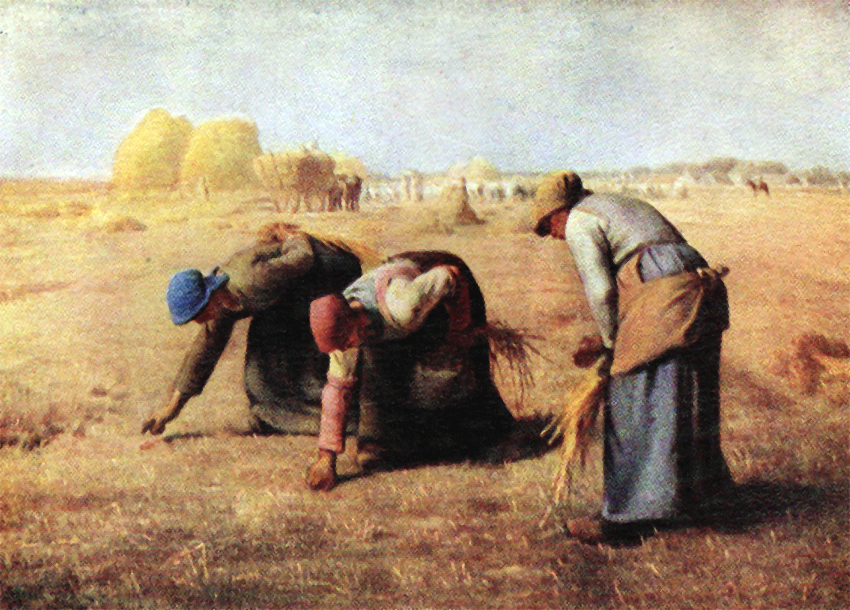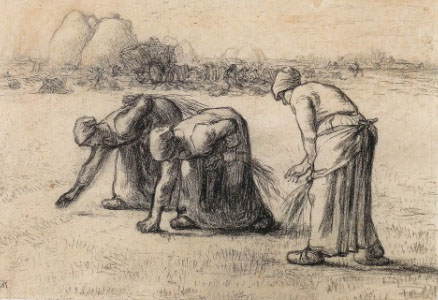Jean Francois Millet’s several large paintings of farm peasants in the fields were highly political statements, protesting the taking of many small farms (and farm life) that surrounded Paris in the mid 19th century, to make room for the new industrial factories and mass housing they needed for their workers.

Millet knew very well he was using the historic significance of Michelangelo’s monumental figures in the Sistine Ceiling to dramatize the dignity of rural life and labor. The paintings (the Angelus was another) triggered a huge protest by the politicians of his time, hypocritically accusing him of “aesthetic blasphemy” for using such sacred icons on trivial people and their lost cause. The uproar caused no end of trouble for Millet, although he was vigorously defended by artist friends like Daumier.

My own temperament prefers the drawing over the painting. The formality of the painting has its own dramatic presence. But there is something about the drawing that allows me to be present at the moment Millet’s eye and hand “finds the look” that reveals his intention. From my own experience I can testify that on those rare occasion when a drawing I make connects with the moment, that essence is permanently imbedded in the drawing. Like the clowns of Walt Kuhn, the tutu bows on Degas’ dancers, or the lonely women in Hopper’s office rooms, that “essence” drawing will often “reappear” as an element in later work.




One Response to Millet’s Gleaners